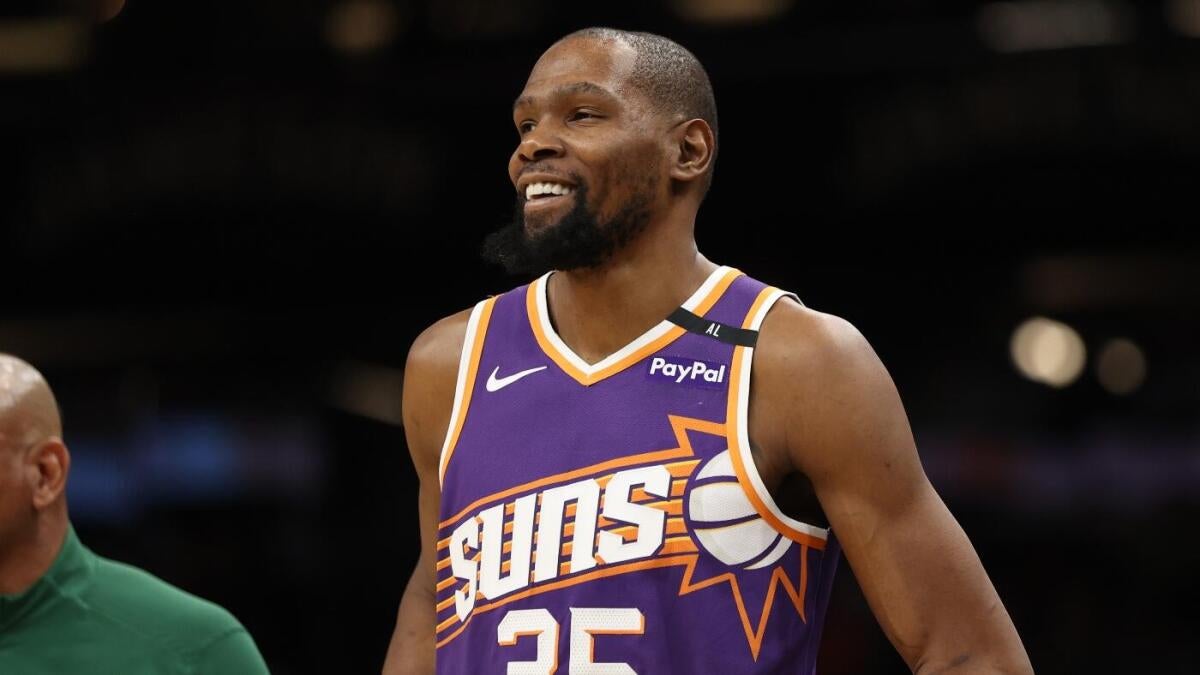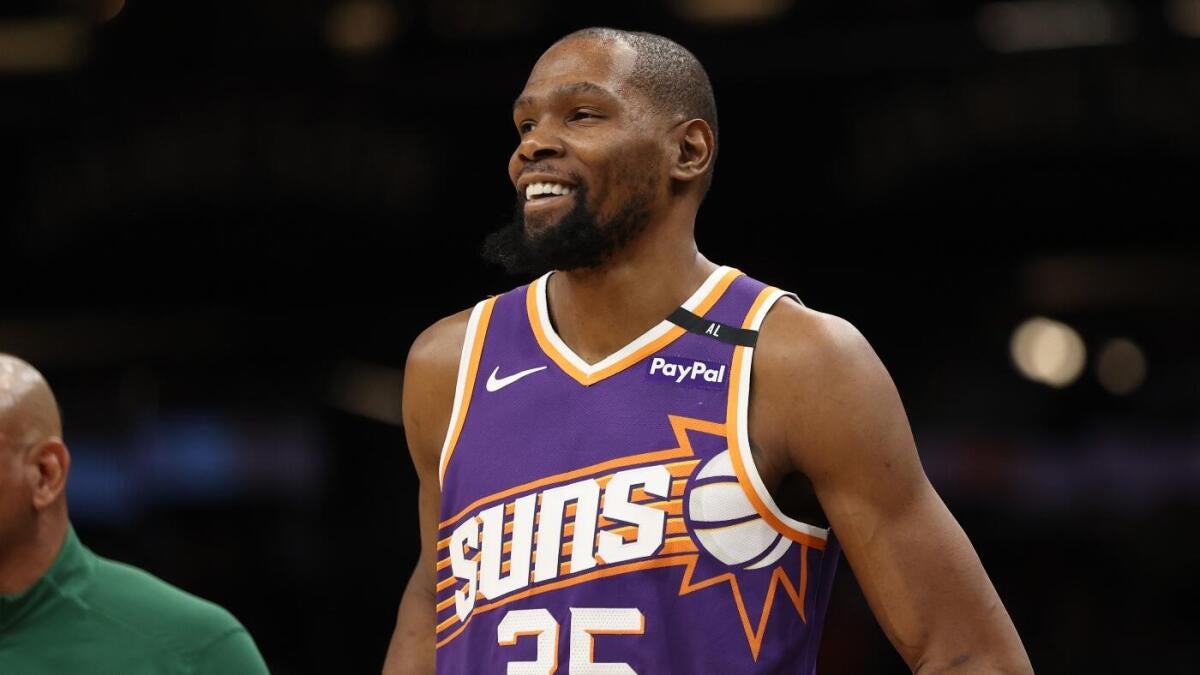The NBA has long been a league defined by its blockbuster trades, but the rumored seven-team deal involving Kevin Durant has the potential to redefine the very fabric of these transactions. The initial reports suggested a straightforward exchange between the Phoenix Suns and the Houston Rockets, but the expansion to a record-breaking seven-team agreement introduces a new level of complexity. This proposed mega-deal not only reshapes the competitive landscape but also sets a precedent for future roster construction strategies.
The Genesis of a Mega-Deal: Beyond a Simple Trade
The initial premise of the trade—Kevin Durant heading to Houston—already raised eyebrows. Durant, a two-time NBA champion and perennial All-Star, represents an immediate infusion of talent and championship pedigree to any roster. The Suns, after a disappointing playoff run, seemed poised to recalibrate their team structure. Trading Durant to the Rockets in exchange for Jalen Green, Dillon Brooks, and draft picks signaled a shift towards youth and future assets.
However, the decision to expand the trade beyond these two teams introduces a new level of complexity. Several factors may be contributing to this development. Firstly, involving more teams allows the Suns and Rockets to maximize their returns. By bringing in additional players and draft capital from other organizations, both teams can fine-tune their rosters to better suit their respective goals. The Suns might be seeking specific role players to complement their remaining stars, while the Rockets could be aiming to offload contracts or acquire future assets to further their rebuild.
Secondly, a multi-team trade facilitates the distribution of salaries and contracts. The NBA’s salary cap and luxury tax rules can make it challenging to execute a straightforward one-for-one trade, especially when dealing with players on max contracts like Durant. By involving multiple teams, the financial burden can be spread out, making the trade more palatable for all parties involved.
Finally, teams may be motivated by the opportunity to acquire specific players or draft picks that are not directly available from the Suns or Rockets. A seven-team trade provides a platform to address various roster needs and long-term objectives, creating a dynamic marketplace where teams can strategically position themselves for future success.
Potential Players: Piecing Together the Puzzle
While the exact details of the expanded trade remain shrouded in secrecy, several teams have been linked to the negotiations. Understanding the rumored involvement of these teams provides valuable insights into the potential framework of the deal.
Los Angeles Lakers: The Lakers’ potential involvement is intriguing. With LeBron James aging, they may be looking to acquire additional talent to compete for championships in the short term. They have been rumored to be willing to trade some of their young players and draft picks to improve their chances of winning now. Their participation could involve adding depth and experience to the Rockets, while shedding contracts.
Atlanta Hawks: The Hawks’ inclusion suggests they might be seeking to offload salary or acquire specific players to better complement their existing core. They have valuable assets that could be attractive to other teams involved in the trade.
Brooklyn Nets: The Nets’ involvement represents a full-circle moment. They previously traded for Durant with championship aspirations, and now, they might be involved in a deal that sends him to another team. The Nets are likely seeking to acquire young talent and draft picks to accelerate their rebuilding process after trading away their superstars. One report indicated the Nets landing Terance Mann and a draft pick in a trade with Atlanta as part of the larger deal.
Golden State Warriors: The Warriors’ rumored involvement raises eyebrows, given Durant’s previous tenure with the team. They could be seeking to acquire specific role players or draft picks to bolster their roster and extend their championship window. The possibility of reuniting with Durant, even indirectly, adds a layer of intrigue to their potential participation.
Minnesota Timberwolves: The Timberwolves are a less frequently mentioned team but could be involved as a facilitator, helping to balance salaries or acquire specific players that fit their roster needs.
Implications for the League: A New Era of Trades?
If this seven-team trade comes to fruition, it could have far-reaching implications for the NBA. It would not only reshape the competitive landscape but also set a new precedent for how teams approach roster construction.
The success of this mega-deal could encourage other teams to explore similarly complex trades in the future. The willingness to involve multiple teams opens up a wider range of possibilities for acquiring talent and addressing roster weaknesses. It could lead to a more fluid and dynamic trade market, where teams are more willing to collaborate to achieve their individual goals.
However, such complex trades also come with inherent risks. Coordinating the needs and objectives of seven different teams requires careful negotiation and a willingness to compromise. There is also the potential for unforeseen consequences, as the ripple effects of the trade can be difficult to predict. Furthermore, integrating a large number of new players into a team can disrupt chemistry and take time to gel.
Ultimately, the success of this proposed trade will depend on the ability of all parties involved to effectively manage these challenges. If the teams can successfully navigate the complexities of a seven-team deal, it could usher in a new era of creativity and collaboration in NBA roster construction.
The Final Buzzer: A Defining Moment for the NBA
The potential trade sending Kevin Durant to the Houston Rockets, expanded to include a record-breaking seven teams, represents more than just a simple player transaction. It’s a testament to the evolving landscape of the NBA, where teams are increasingly willing to explore innovative and complex strategies to achieve their goals. While the ultimate outcome remains uncertain, the mere possibility of such a mega-deal underscores the dynamic nature of the league and the relentless pursuit of competitive advantage. If completed, this trade could redefine how teams approach roster construction, ushering in an era of unprecedented collaboration and creativity in the pursuit of championship glory. Only time will tell if this deal becomes a blueprint for future transactions or a cautionary tale of the challenges inherent in orchestrating such a complex undertaking.












